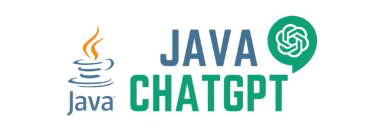How new Income Tax Bill 2025 rewrites a new era of taxation from April 1, 2026 The new Income Tax Bill aims to do the same with the current Income Tax Act. The new tax bill attempts to streamline and consolidate the current income tax laws
Suresh Surana
Practising Chartered Accountant
The copy of the new Income Tax Bill 2025 has been made available to the Members of Parliament (MPs) on February 12, 2025 and has been tabled in the Lok Sabha today. After the GST reform in 2017 wherein all the indirect taxes were subsumed, the effort made by the government to revamp completely the Income Tax Act (which was legislated about 64 years ago) is quite appreciable.The move to streamline the current provisions of the Income Tax regulations was much awaited, considering that it may not be easy for a layman to comprehend its provisions. Further, there has been a long history of pending litigations at various appellate authorities. This also aligns with the government's efforts to ease the administrative aspects of doing business and the commitment of the income tax department to "trust first, scrutinize later".
Also read | 10 takeaways in new Income Tax Bill for taxpayers
Some of the key takeaways based on perusal of the Income-Tax Bill 2025 made available to the MPs are as under:
a) Overview of the Construct as compared to the earlier Income-Tax Act 1961:
The new Income Tax Bill is proposed to be effective from April 1, 2026, and would comprise of 536 sections, which are spread over 23 chapters and 16 schedules. A quick overview of the current Income Tax Act and new Income Tax Bill framework is as under:| Effective Date | | |
| No of Sections | | |
| No of Chapters | | |
| Schedules | | |
| Pages | | |
Further, it is observed that as compared to the current Income Tax Act, there has been a significant effort made to remove the Proviso, Explanations contained in the sections and wherever necessary, tables have been inserted to make it more subtle and legible.
Also read | New Income Tax Bill 2025 Live Updates
For instance, the meaning of "agricultural land" as contained in the Income Tax Act was quite complex as it was in a paragraph format. Now in the new Income Tax Bill, an effort has been made to tabulate certain parts of the wordings, to make the meaning of "agricultural land" easier to comprehend.
b) "Tax Year" has replaced the concept of "Assessment Year" / "Previous Year"
The term "tax year" has been defined under section 3 of the new Income Tax Bill to mean the twelve months period of the financial year commencing on the April 1. Further in case of a business / profession newly set up, or a source of income newly coming into existence in any financial year, the tax year shall be the period beginning with (a) the date of setting up of such business or profession; or (b) the date on which such source of income newly comes into existence, and in both cases ending with the said financial year.In the new Income Tax Bill, the term "tax year" has replaced the terms such as "Assessment Year" or "Previous Year", which in many cases were misconstrued by the taxpayers. This was an expected change and would definitely provide more clarity to the domestic and foreign taxpayers to clearly decipher the provisions of the Income Tax Bill and the specific year to which reference is made.
c) No notable changes in Tax Rates
There has been no further change proposed in the Income Tax Bill with respect to the income tax rate structure as applicable to the assessees. The focus of Income Tax Bill is to streamline the framework of the Income-tax regulations to make it user-friendly and clear.d) No substantive changes in the Residential Status in case of Individuals, HUFs, Companies, etc.
With respect to the residential status determination, there is no substantive change in the provision as per the New Income-Tax Bill 2025.1) In the new tax Bill, the determination of residential status is also contained in Section 6 and has been rephrased without any change in the meaning
2) Sub clauses have been renumbered: For instance, deemed residency u/s 6(1A) of Income-tax Act 1961 is now contained in section 6(7) of the Income Tax Bill 2025
3) Further, there is no substantive change in the determination of residential status in the case of other assessees, such as Companies, HUFs, etc, which are contained in section 6 of the Income Tax Bill
4) Only change seems to be "previous year" is replaced with "Tax Year"
e) No change in the heads of Income:
Currently under the Income-Tax Act, the income chargeable to tax is classified under 5 different heads of Income. It was expected that there could be certain change in the heads of Income. However, in the draft of new Income Tax Bill, it is notable that no change has been made with respect to the heads of the Incomes and it has been retained as under:- Salaries
- Income from house property
- Profits and gains of business or profession
- Capital Gains
- Income from Other sources
f) Separate Rules to be Prescribed under the Income Tax Bill
Currently, the provisions of the Income Tax Act are to be read along with the Income Tax Rules in many cases. For instance, Rule 8D of the Income Tax Rules provided for the computation of expenditure (which is disallowable) in relation to exempt income as provided in section 14A of the Income Tax Act. Further, there are certain valuation rules prescribed under Rule 11UA for the valuation of assets (including shares of listed and unlisted companies). There are also rules prescribed under the current Income Tax Rules for valuation of perquisites, etc.As per the new Income Tax Bill, in many cases it has been mentioned that rules would be prescribed under the Income Tax Bill. Further, section 2(80) defines "prescribed" to mean prescribed by Rules made under this Act. As such, we also need to separately await the rules under the new Income Tax Bill which would provide more clarity on the operational aspects, such as perquisite valuation, disallowance of expenditure incurred to earn exempt income, valuation rules, etc.
g) Section 10 of the Income Tax Act which provides for exemption from tax in certain cases, has now been separately covered in Schedule II to Schedule VII of Income Tax Bill
Section 10 of the Income Tax Act, which provided for exemption of certain income such as agricultural income, share of profit from partnership firm, family pension, scholarships, certain interest on NRE / FCNR deposits, short stay exemption, etc has now been covered separately in Schedule II to Schedule VII of the Income Tax Bill in a tabular format.This presentation in the Income Tax Bill would make it easier for the layman to refer the specific schedule applicable in their case to determine whether any specific income is exempt or not. This has been a welcome change and it aligns with the overall objective to streamline the ITA and make it more comprehensible for the layman.
h) Provisions of the TDS / TCS applicability which was earlier covered in Chapter XVII of the Income Tax Act has now been consolidated in a tabular manner in the Income Tax Bill
Under the Income Tax Act, there are several sections such as 194A (Interest), 194I (Rent), 194J (Professional fees, Fees for technical Services, Royalty payment), 194H (Commission), 194C (Contracts), etc. Most of the sections had similar provisions except for the applicable tax rates, thresholds, etc.Under the Income Tax Bill, the issue of overlapping and almost similar provisions of TDS was addressed by covering the TDS provisions (except salaries) under section 393 of the Income Tax Bill in a concise and tabular manner. Further the provisions of TDS on Salary contained in section 192 of the Income Tax Act has been covered in section 392 of the Income Tax Bill. Similarly, the provisions of TCS contained in section 206C of the Income Tax Act has been covered in a tabular manner in section 394 of the Income Tax Bill for ease of reference. This is a welcome move and would make the TDS / TCS provisions easier to understand and would help in better compliance, avoid tax leakages and ensure administrative ease.
i) TDS provisions for non-residents such as Royalties, FTS, Dividends, Interest would be governed by section 207 of Income Tax Bill and no changes proposed in the applicable tax rates
Currently, section 115A of the Income Tax Act provides for the applicable tax rates on certain payments to non-residents, such as towards Royalties, Fees for Technical Services, Dividends, Interests etc, and the TDS rates applicable is 20% under the Income Tax Act (subject to the benefit available under the DTAA). On perusal of the Income Tax Bill, it is notable that similar provisions have been covered in section 207 wherein the tax rates are tabulated for ease of reference and further that no substantive change is proposed in the rate structure.(The article is written by Dr Suresh Surana, a practising chartered accountant.)
(Disclaimer: The opinions expressed in this column are that of the writer. The facts and opinions expressed here do not reflect the views of www.economictimes.com.)
This story originally appeared on: India Times - Author:Faqs of Insurances


























































